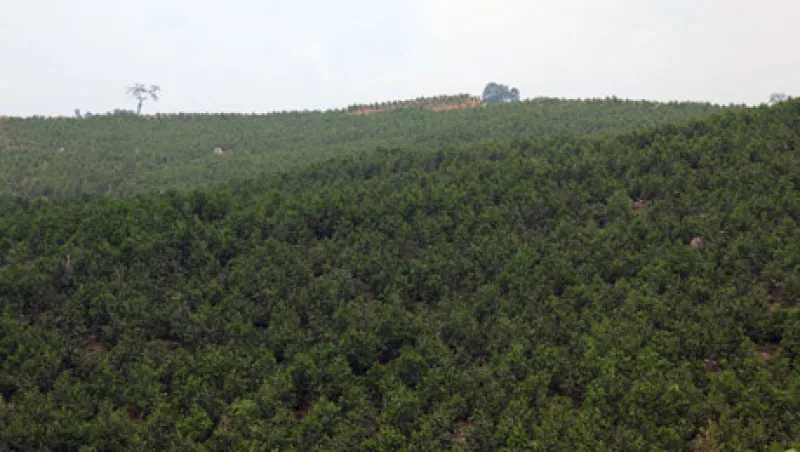Forget the summer’s wildfires. Timberland is heating up as an asset, with major acquisitions of two Portland, Oregon–based timberland asset managers announced in less than a month. And now with a big pension fund manager getting in on the action, one can’t help but wonder if other pension funds will see upside here.
In mid-July, the Hancock Timber Resource Group of Boston and the Molpus Woodlands Group of Jackson, Mississippi, bought out the assets of Forest Capital Partners in a deal with an undisclosed price tag, and they split its huge 1.88 million acre portfolio. Hancock got 1.35 million acres in Louisiana, Oregon, Idaho and Washington, while Molpus got 535,000 acres in Louisiana, Idaho and Minnesota. Hancock Timber, which is owned by Manulife Asset Management of Boston, manages about 6.6 million acres of timberland in the U.S. and abroad, while Molpus currently manages about 1.5 million acres of timberland investments in seventeen states.
On July 31 TIAA-CREF, the New York City–based asset manager with $481 billion in assets under management, acquired an 80 percent interest in GreenWood Resources, also for an undisclosed amount. TIAA-CREF said that with the addition of GreenWood, its timberland portfolio grew to a total of 840,000 acres worldwide, worth about $1.8 billion.
Jose Minaya, the managing director and head of global natural resources and infrastructure investments at TIAA-CREF, says that its investment in GreenWood is on behalf of its general account.
Domestically, GreenWood operates the $175 million GreenWood Tree Farm Fund, which owns 31,800 acres of timberland in Oregon and Washington, and it also has a number of international operations. This March it signed an agreement with International Paper to develop a biomass plantation in Pomerania, Poland, which will be the largest of its kind in Europe. It’s also building out its presence in China, where it has recently established six nurseries in five provinces, and it also has operations in Chile.
GreenWood specializes in short-rotation, fast-growing species such as the hybrid poplar, which has a number of the usual uses, such as furniture and paper, but more recently, has become “the species of choice for cellulosic biofuels,” says Jess Nuss, GreenWood’s president and CEO. In 2008, GreenWood struck a deal with ZeaChem of Lakewood, Colorado, under which it would supply poplar feedstock for a new cellulosic biorefinery that has since been built near Boardman, Oregon, where GreenWood has one of its big timber farms.
GreenWood and ZeaChem are part of a group that got two $40 million grants from the U.S. Department of Agriculture (USDA) for the development of hybrid poplar bioenergy crops for the region’s renewable transportation industry, awarded in September 2011. The group also includes a number of university research centers.
Minaya says that one of GreenWood’s attractions was its devotion to the science of growing better trees more quickly, known as silviculture, which is “a very undeveloped area in timber,” he says. According to the literature on its web site, GreenWood has been collecting parent tree material for more than 20 years; and in terms of producing the best crossbreeds, it now produces about 4,000 crosses every year, which are put into trials.





